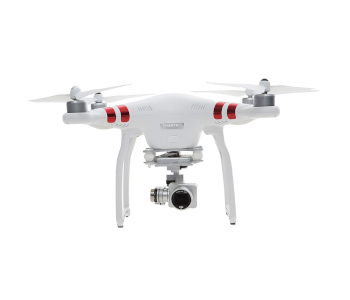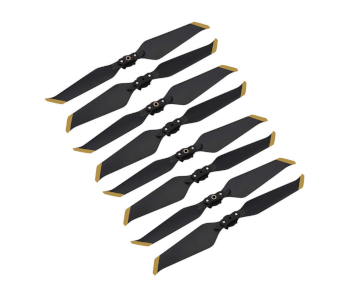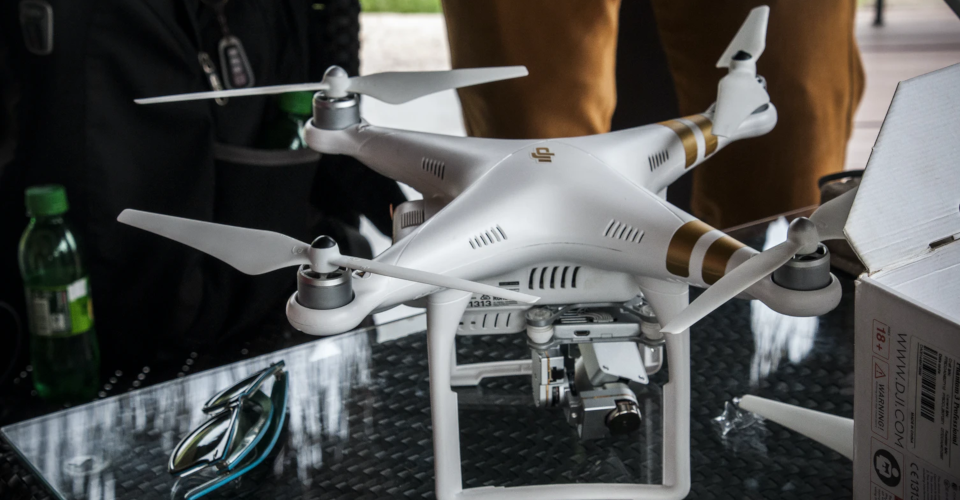Plastic Propellers Vs. Carbon Fiber Propellers: Pros and Cons
Plastic propellers are probably familiar to just about anyone who has tried flying a drone. Cheap and fairly reliable, plastic has become the material of choice for the stock propellers that come with just about every single commercial drone.
However, many drone brands also offer carbon fiber “upgrades” for their propellers. These are a little more expensive and significantly more rigid replacement parts. Are carbon fiber propellers better than plastic ones? Is the additional expense for carbon fiber propellers worth the upgrade?
Carbon fiber propellers are more expensive

To demonstrate, a complete set of four propellers for the DJI Phantom 2 or 3 drones costs close to $40. By comparison, a spare set of the original plastic propellers only costs about $20. The disparity in price is even more pronounced if you’re buying propellers that don’t come with the DJI brand – carbon fiber propellers can be between three to four times more expensive than plastic alternatives.
At first glance, the price difference between plastic and carbon fiber propellers may not seem all that significant. However, it also does not take much to damage a propeller. It’s not unusual for drone pilots to have to go through several sets of propellers on a single afternoon of flying drones, especially if you tend to spend several hours flying.
Over the course of your entire time flying drones, you can end up spending several hundred dollars more by making the switch to carbon fiber propellers. The only question left at this point is – are carbon fibers worth it?
Carbon fiber propellers are more rigid
One of the most apparent factors that distinguish between carbon fiber and plastic propellers is that carbon fiber is much more rigid. The flexible nature of plastic propellers makes them much more pliable as they rotate and cut through air resistance. This results in lower propulsion, as well as a translation of the excess vibration to the frame of the drone.
The rigidity of carbon fiber propellers allows it to cut through air more efficiently, thus translating more of the wind into lift or propulsion. This helps slightly in terms of battery efficiency. The reduction in vibration also helps reduce the ‘jello’ effect in videos shot by drones. However, modern gimbal cameras already do an excellent job of compensating for this excessive vibration.
In terms of stability, many pilots believe that the added rigidity of carbon fiber propellers can be counterproductive. There’s a good reason why the propellers of helicopters are also flexible – because they can adapt more easily to changing aerodynamic conditions. Thus, flying with carbon fiber propellers can be problematic in particularly windy conditions, especially when wind direction tends to shift frequently.
Carbon fiber propellers are lighter
A distinguishing characteristic of carbon fiber in almost all its applications is that it has a remarkably high strength to weight ratio. This means that carbon fiber propellers are relatively lighter compared to plastic. This comes into play when a drone needs to change direction.
The difference in weight between carbon fiber and plastic propellers comes into play when making sudden changes in direction. Whenever a drone has to change direction or speed, the speed by which their propellers are rotating must also be altered.
A heavier plastic propeller achieves this with more difficulty because of excess momentum. However, this delay is something that most drone pilots get accustomed to and learn to compensate for. On the other hand, a drone with lightweight carbon fiber propellers responds to pilot input in a much more aggressive manner. Some drone pilots may prefer this twitchiness, especially those who are into competitive drone racing.
In most cases, the preference between carbon fiber and plastic propellers in terms of flight performance is a matter of experience, style, habits, and personal taste. If you learned how to fly drones with plastic propellers, then making the shift to carbon fiber propellers may seem like a disorienting experience.
Plastic propellers can take a beating

The extra rigidity of carbon fiber propellers may seem like an advantage, but it becomes a liability in terms of durability and longevity. As many drone pilots can attest to, plastic propellers can take quite a beating. Plastic propellers can accommodate getting bent out of shape to a limited degree without suffering permanent damage. Its extremely lucky, but not uncommon, for drones with plastic propellers to be able to get back to flying after a crash.
An unfortunate consequence of the rigidity of carbon fiber propellers is that they are also brittle. This makes them highly prone to chipping or cracking, even after just a single crash. The need to replace these carbon fiber propellers more frequently further compounds the price of using them instead of plastic ones. If you tend to get into crashes fairly frequently, then having to swap out new carbon fiber propellers every single time can get expensive rather quickly.
Carbon fiber propellers look cool
This is a very minor argument, but most carbon fiber propellers look much better than their plastic counterparts. If you want to show off how cool your drone is, then putting on a set of carbon fiber propellers on it might be a good idea. Carbon fiber propellers look sleek and futuristic – probably a part of why they are so expensive. Just don’t go flying your drone with them if you don’t know what you’re doing!
Are carbon fiber propellers worth it?
The conversation about whether carbon fiber or plastic propellers are better can go both ways. Some pilots claim that they like the upgrade in agility that carbon fiber propellers like, while some find them to be too aggressive and unstable. Most drone pilots have learned how to fly with plastic propellers, shaping their habits to how they typically perform. For many drones, making the shift to carbon fiber isn’t a good enough reason to re-learn their long-established flight skills.
In terms of overall flight performance, both plastic and carbon fiber propellers may have merits and drawbacks. What is definite is the fact that carbon fiber propellers cost at least twice as much as plastic. This price difference is very off-putting considering that the propellers are the parts of a drone that get replaced most frequently. If you can fly perfectly well with plastic propellers, why would you want to fly with carbon fiber propellers if they don’t provide a compelling upgrade?
If you’re still curious about carbon fiber propellers, then our advice is that there’s nothing wrong with trying it out. They might be more expensive, but they still aren’t THAT expensive to prevent you from buying just a single set. More than just listening to the advice of strangers on the Internet, only you can decide if you prefer flying with either plastic or carbon fiber propellers.
Final thoughts
Which is better – plastic or carbon fiber? This is a question that has been asked hundreds of times over in drone groups and communities over the years. As with any topic worth debating about, there isn’t a definite answer to this question. A majority of drone pilots have gotten accustomed to flying with plastic propellers and see no point in making a change. On the other hand, there are also more than a few drone pilots who swear by the upgrades that a set of carbon fiber propellers provide.
Both options are viable and have their merits. At this point, what we can say for sure is that flying with either propeller types is a matter of personal taste. Do you need the extra agility of carbon fiber, or is too aggressive? Do you like how plastic is more responsive to changing conditions, or is its excessive vibration ruining your shots?
Have you had any experience flying your drone with different propeller materials? Tell us about your experience in the comments section!

